Leonardo da Vinci's Virgin of the Rocks: Will Gompertz reviews immersive show at London's National Gallery ★★☆☆☆
- Published
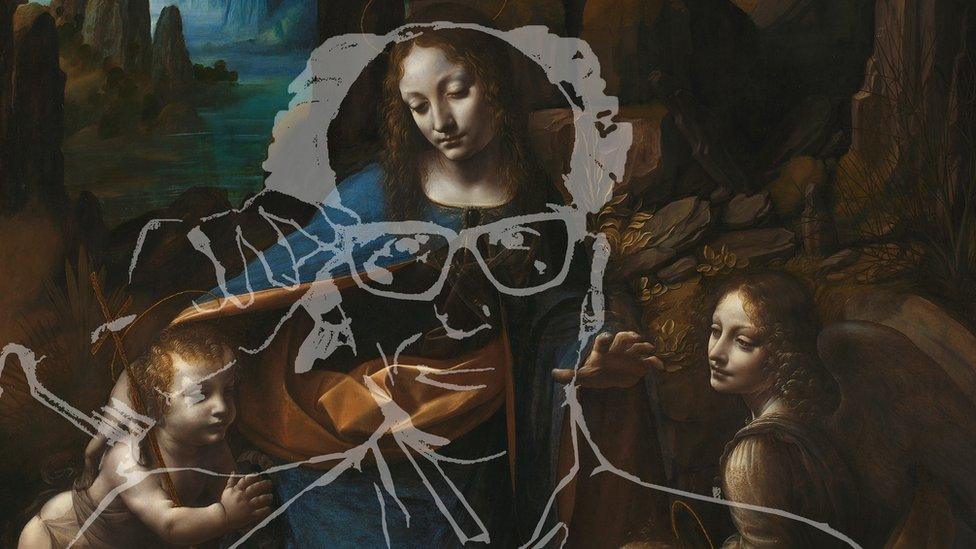
The boss of the National Gallery is a tall, physically imposing man with big bushy eyebrows and an easy charm, who, like all good museum directors, has an academic's mind and an impresario's spirit. His name is Gabriele Finaldi.
Dr Finaldi is a moderniser whose mantra appears to be not so much out with the old and in with the new, but more, stick with the old and think anew.
Like a chef serving up yesterday's fish dish as a fresh-n-spicy kedgeree, he is keen to re-contextualise his Old Masters in zesty combinations.
And so, the 20th Century British painter David Bomberg will soon be seen alongside Botticelli and Michelangelo, and, as from this weekend, the gallery's Leonardo da Vinci masterpiece, The Virgin of the Rocks, is to be found below stairs as the only painting in a four-room "immersive" exhibition.


The National Gallery's painting of Leonardo da Vinci's The Virgin of the Rocks (1506-8) is second version of the picture

It is a bold move: a £1m punt to test the public's appetite for an art "experience" at the National Gallery, in which the celebrated artwork on view is one you can normally see for free but now have to pay between £16 - £20 for the privilege.
The idea of an experiential art presentation full of digital embellishments has worked elsewhere. There's a popular Van Gogh "immersive experience" currently doing the rounds, in which huge projections of the Dutchman's iconic images are slapped over interior walls and ceilings like emulsion paint.
Even the normally straight-laced Louvre in Paris has jumped on the digital bandwagon with Mona Lisa: Beyond the Glass, a seven-minute virtual reality trip in and around the world's most famous painting. One art critic told me that it was so effective in making you feel like you were standing on a rocky precipice that she felt like she was clinging on for dear life.
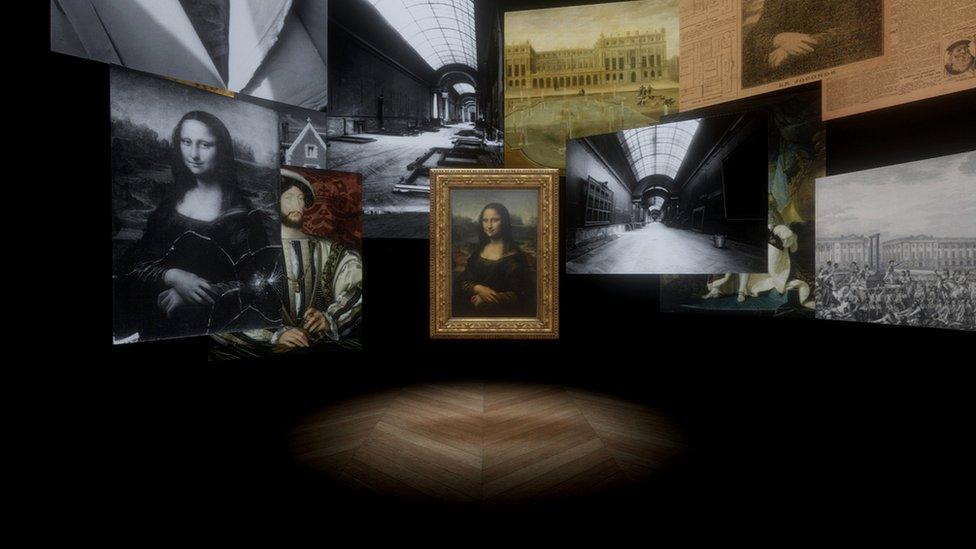
Mona Lisa: Beyond the Glass is the Louvre's first virtual reality experience, and is part of the Paris museum's Leonardo da Vinci exhibition
There's nothing so dramatic in the National Gallery's Leonardo Experience.
In fact, the first room is so bland I thought it was the exhibition shop awaiting a delivery.
The lighting is bog standard, the sound of water on rocks no more convincing than the leaky tap in the gents, and the two curving walls of metal boxes containing Leonardo quotes (mirrored, of course) are about as inviting as a dip in the North Sea in December.

The opening room creates a landscape with metal boxes of the artist's images and quotes
It leads to a central space from which the three remaining rooms are accessed.
They are much better.
The first is an atmospheric recreation of the gallery's conservation studios (any misconception that it's a mock-up of Leonardo's workplace is banished by the angle-poise lamps), in which we are to learn something new about the old master.
The central slideshow projection reveals what the curators discovered after using the latest technology to find out what lay beneath the surface of the painting. An audio commentary relayed through speakers supplements the photos, explaining each stage, and how the National Gallery's The Virgin of the Rocks differs from the earlier version Leonardo produced, which now hangs in the Louvre.
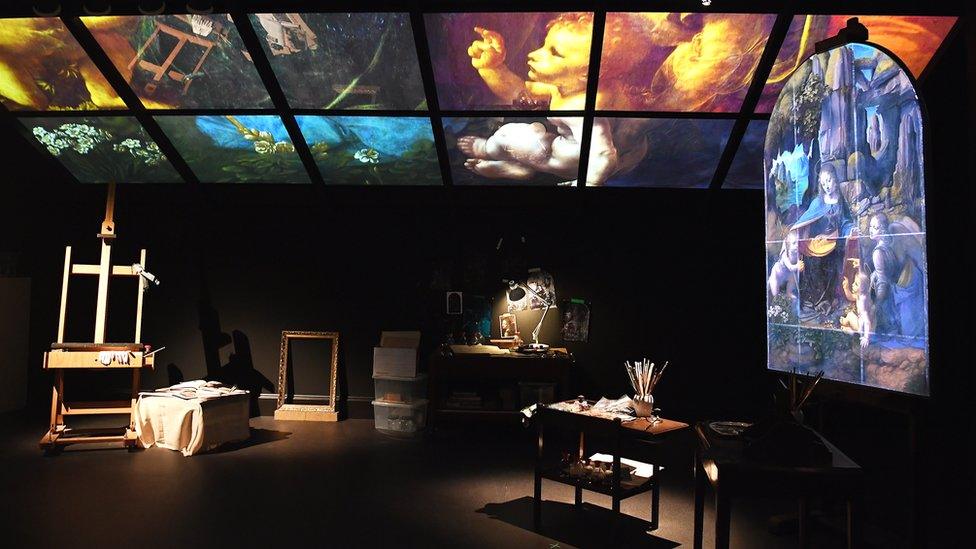
A recreation of one of the National Gallery's conservation studios, where research was done on the painting

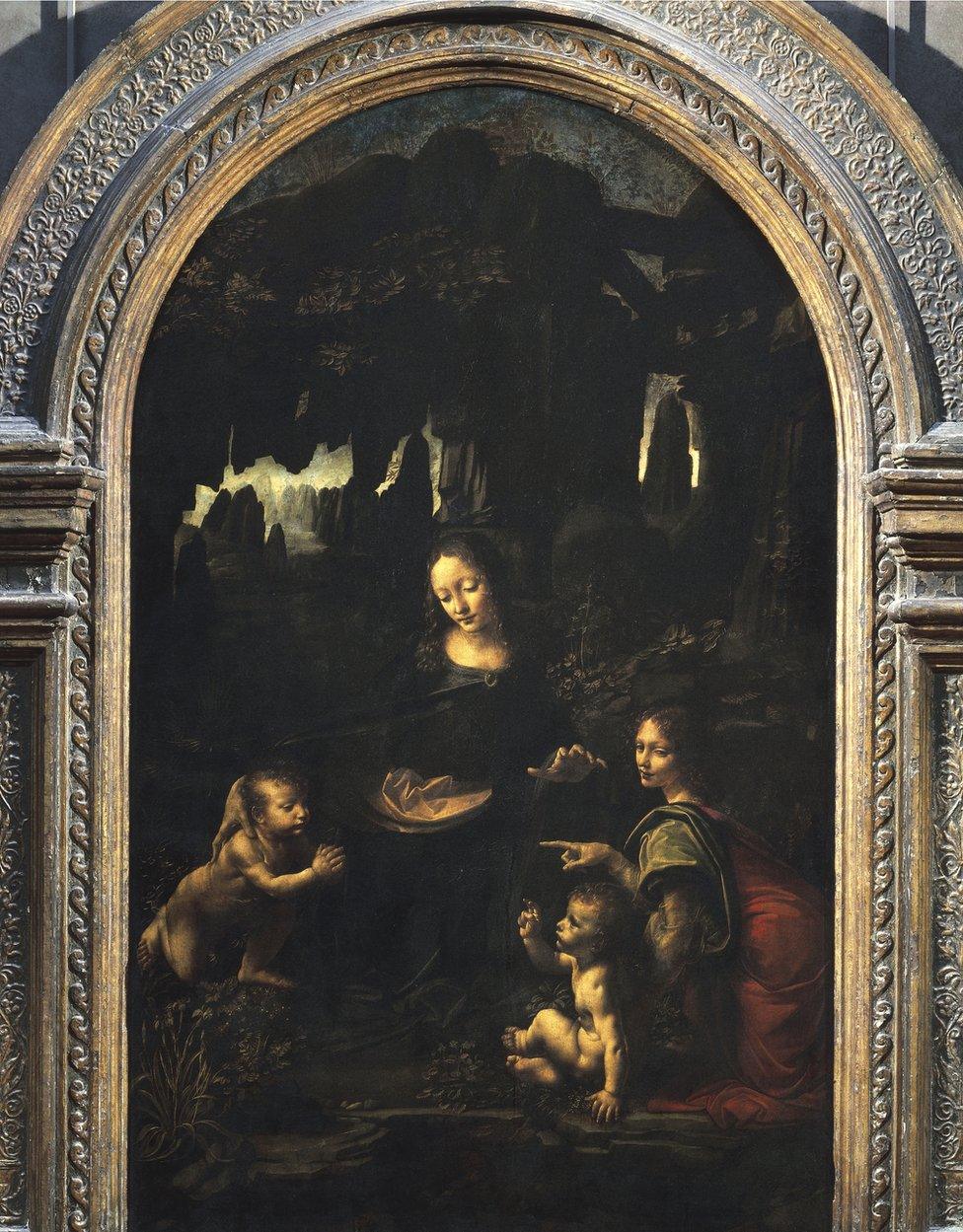
Leonardo da Vinci's first version of The Virgin of the Rocks (1483-1486) is in the Louvre in Paris

As layer-after-layer of the painting is peeled back, ceiling projections and art studio ephemera add to the sense of theatre in the darkened room.
And then comes the big moment: hidden under the finished picture lies a markedly different composition. The subject is the same, The Virgin and Christ Child in a rocky landscape, but the cast of supporting characters and their positioning is not.
The gallery has only recently found this out, and is now presenting its research for all to see in this themed room, which is unquestionably immersive and impressive, although at the expense of narrative detail. You are left with more questions than answers.
I'm all for being entertained, but I want to be educated as well.

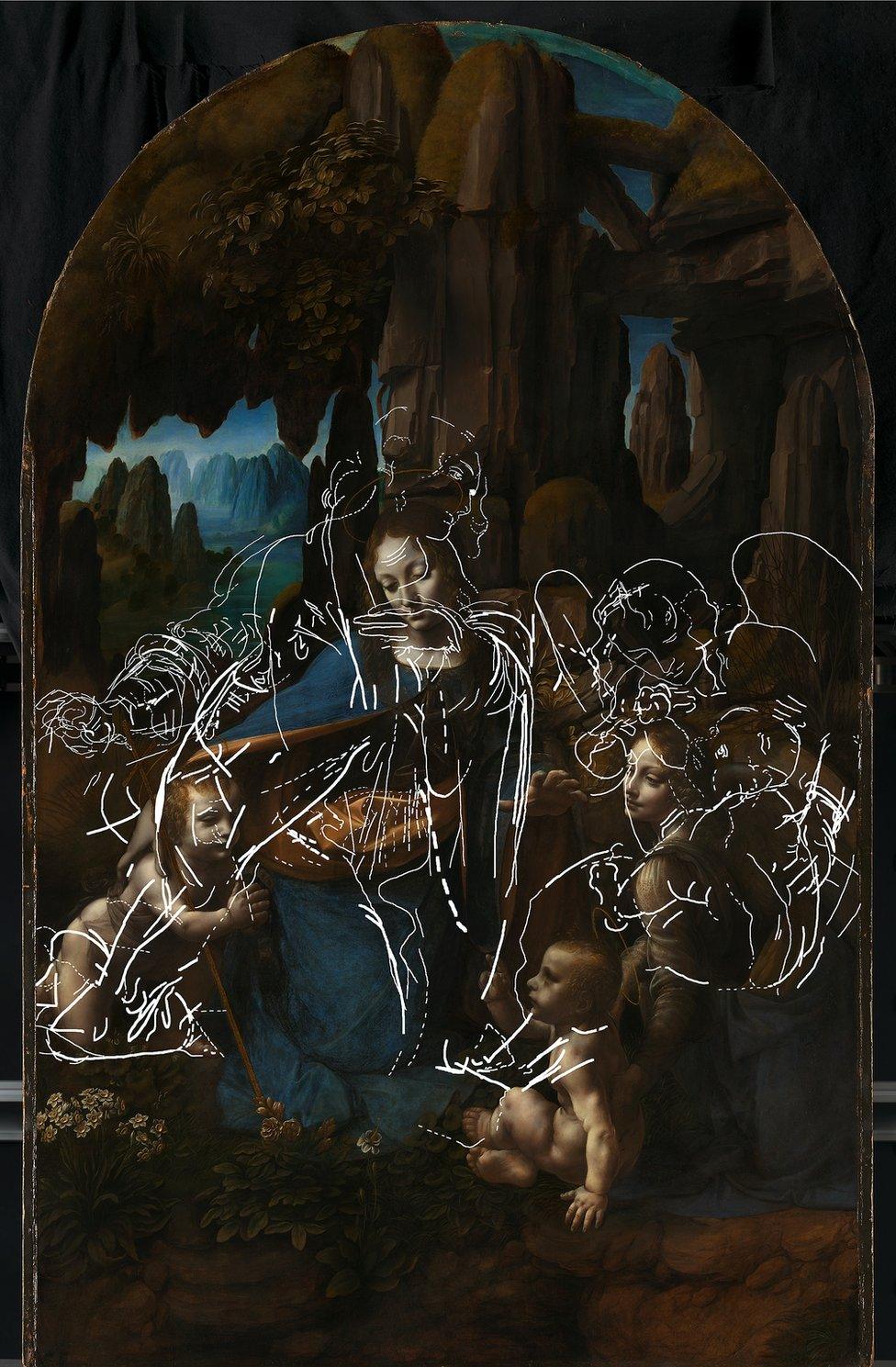
Scientific research at the National Gallery led to the discovery of this drawing underneath The Virgin of the Rocks

The same imbalance is evident in the room dedicated to exploring Leonardo's approach to light and shadow. Three off-white objects are placed in separate small black boxes with lighting you can manipulate in order to play with the chiaroscuro (starkly contrasted light and shade) effects for which Leonardo was famous.
They are fine but underwhelming, more so if you've queued a long time to have a go. And once again, there's precious little information to deepen knowledge.
The final room suffers from the same problem.
We don't get to hear the full story of the church in Milan for which the painting was commissioned. Nor how the building came to be destroyed along with the altarpiece containing Leonardo's painting. Instead, there are evocative projections and mood-enhancing music drawing you towards the star attraction of the show: a digital recreation of the altar with the gallery's The Virgin of the Rocks centre stage.
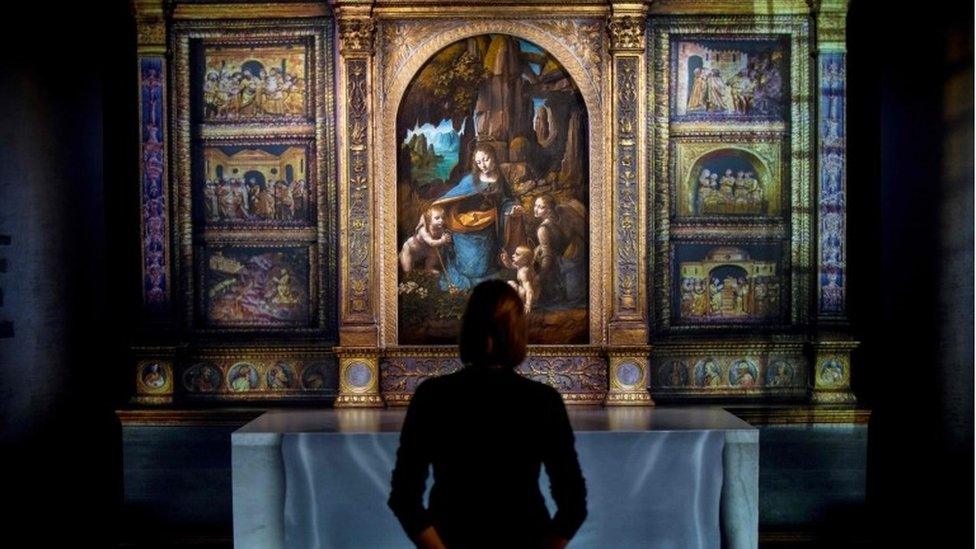
59 Productions, which created the show, has set the painting in a digitally produced altarpiece
This is the ultimate test of the exhibition. Is the experience of seeing this masterpiece enhanced or diminished by having graphics animating continuously on either side of it?
The answer is, it is ruined.
You can't possibly give it the attention it deserves with so much to distract your gaze. Nor can you see it very well unless you are standing in one spot directly in front of the painting. Look at it from any other angle and the light reflection from the digital projectors glint on its surface like a full moon.
They would be better off replacing it with a digital version, which it looks like anyway in this installation, and leave the real thing upstairs in the main collection galleries for visitors to enjoy for free.
The Leonardo Experience is a miss, but it's not a million miles away from being a hit.
I don't think it's a cynical ploy to woo the Instagram crowd or to make a quick buck (although both would be welcome I'd imagine), but a sincere attempt by all involved to use contemporary technology to increase understanding and appreciation of art.
This show is a step along the way, a wholehearted experiment of sorts for which Dr Finaldi and his team should be congratulated.
There is bound to be an element of trial and error, there always is when breaking new ground.
You only have to look beneath the surface of a Leonardo da Vinci painting to know that.
Recent reviews by Will Gompertz
- Published28 September 2019
